jung haus
michigan’s first certified passive house
Here we share some observations about and snapshots of the Passive House we had built in Oakland County, Michigan. All photographs were taken by us unless otherwise noted.
—Maura and Kurt Jung
Life in a Passive House
Tuesday, 28 February 2017
In coordination with our friend Michael Klement we recently hosted at our house a gathering of people interested in energy performant buildings. Participants included people involved in the design and construction of passive houses (including members of the outstanding Phoenix Haus team) as well as prospective passive house homeowners.
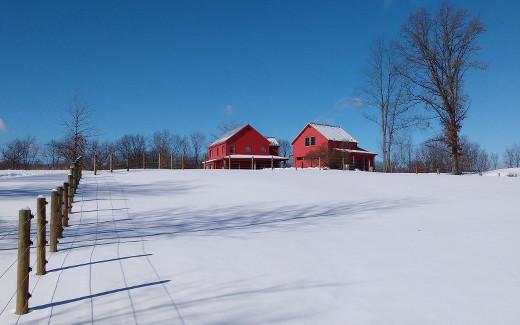
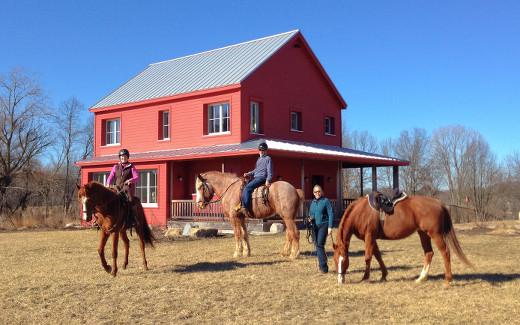
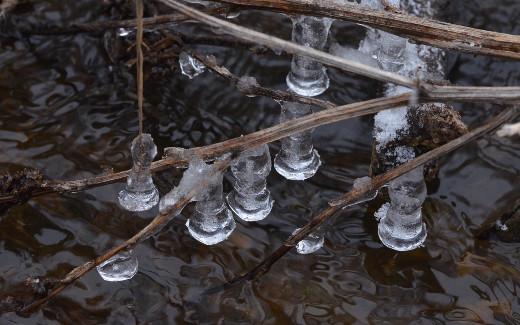

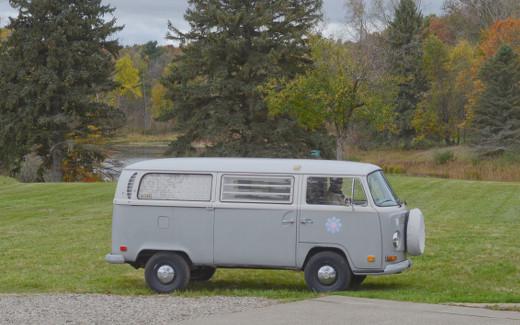
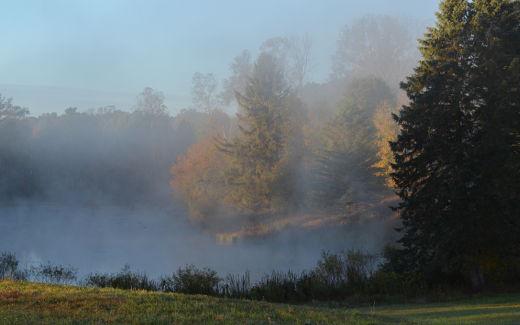
Certain discussion topics come up routinely at events like this. Here is a summary of some of them.
Price
Clearly, passive house construction comes at a premium. Hammer and Hand estimate the extra cost over standard code-compliant construction to range between 5% and 15% for a single family home. Our particular home was at or above the high end of that range. This is notably due to the use of its combination TJI truss over 2x6 wall assembly rather than the more commonly used structural insulated panels, a decision motivated by reasons of sustainability rather than cost.
At this time, most passive houses in this country are designed by certified professionals. Designing a house to the passive house standard will, unsurprisingly, come with its own premium. We would welcome a trend in which inexpensive home plans include a passive house option.
Appliances
We use a condensing dryer when the weather keeps us from hanging laundry outdoors. This kind of dryer, common in Europe but still a rarity here, is electrical and is not vented to the outdoors. Water from the fabric being dried is plumbed directly to a floor drain or to a removable tray. During the times that we use this dryer we welcome its warmth. This is thermal energy that stays in the house where we want it rather than discarded outside through a vent.
Our water heater is a standard electrical model. Last year it replaced a heat pump water heater that was continually problematic for us. We have concluded that a heat pump water heater does not make sense in our Michigan cold weather climate. The ambient thermal energy it transfers to its evaporator leaves the surrounding area uncomfortably cold. Heat pump water heaters undoubtedly make good sense in warmer climes.
Bathroom and kitchen range ventilation is surprisingly effective in our house. Rather than use vents to the outside that would compromise the airtight aspect of our home, we have a simple option to step up the energy recovery ventilator’s flow rate. Normally, day in and day out, the ventilator exchanges fresh air with stale at the rate of 96 cubic feet per minute. At this rate, an entire house volume of air is recycled in three hours. Fresh air (that has been warmed by outgoing stale air in the winter and cooled and dried in the summer) is continually supplied in bedrooms and living areas. Stale air is collected in the kitchen and bathrooms. Even without the step-up feature of our ERV, the continual air flow into the kitchen and bathrooms removes odors. This is unlike standard construction in which some under-powered utility fan must work against the static air pressure throughout the building. Even when the ERV flow rate has been doubled we can’t feel or hear any air movement.
Heating, cooling, ventilation
In our house, ventilation is separate from heating and cooling. The building is so airtight and well-insulated that temperature variation throughout the interior is minimal. Even when the outside temperature is below 0 °F we are as comfortable sitting on our window seat as we are away from the wall.
Two wall-mounted minisplits (air-to-air heat pumps with reversible refrigerant flow based on the season) provide all the warmth in winter and dehumidification in summer that we need. One of the units is on the ground floor; we use this almost exclusively for winter heating. The other is upstairs and is used almost exclusively for dehumidification during hot, muggy summer weather. Even though the units came with thermostats we control them manually. When it feels a little cool indoors in winter, we turn the downstairs unit on in heating mode. If it’s especially cold and cloudy outside, we may have to crank up the fan speed a notch. The power draw is roughly the same as a hair dryer, although it is very quiet. When it feels a little warm indoors, we turn the unit off. In general, the cycles of operation span days or weeks, an entirely different effect than using a high capacity furnace to heat or air conditioner to cool. In spring and autumn the minisplits are rarely used. During those seasons we control temperature by opening and closing windows.
One observation is worth noting with respect to the energy recovery ventilator. On our house, the fresh air intake and the stale air output vents are located on a west wall about eight feet apart. A couple of times after we have prepared something aromatic in the kitchen and the outside conditions are very calm, we have detected the faintest trace of the aroma elsewhere in the house. There is no branching in the eight supply and eight exhaust conduits that connect the ERV and the various room registers, so we figure this results from kitchen air drifting outside from the output vent to the intake vent. In retrospect, we wish we had separated the vents more, possibly by putting them on different walls.
Renovation versus new construction
Among the discussions we have with visitors, a fairly common topic is that of applying passive house principles to existing structures or to new standard construction. Anyone considering a project like this would do well to study the Passive House Retrofit site that details the successful efforts of Lucy and Ed Marion to transform their home in Ontario. One takeaway is that the Passive House standard sets a really high bar and demands attention to every detail of the building envelope including the foundation. Another is that a passive house isn’t merely a code-built house with extra insulation and without air leaks, but one that provides continual, energy efficient ventilation and optimal sunlight exposure and seasonal shading.
Posts
April 2012
May 2012
Framing delivered and barrier installed
Installing the first floor walls
Preparing for the second floor
Straight, Plumb, Level, Square and now Airtight
June 2012
Crawl space insulation and roof
First floor preparation, TJI base
First floor concrete and first envelope trusses
Excavating, trusses and crawlspace stairway
Fiberboard installation and wrap
July 2012
August 2012
September 2012
Wiring, insulation, porch roof
Mechanical system installation
October 2012
Wood floors and exterior painting
November 2012
Exterior concrete, kitchen cabinets
WKAR interview, floor finishing
Exterior concrete, crawlspace walls and floor
Compressors, exterior lights, tile
December 2012
Exemplary results in blower door test
January 2013
Upstairs floor finishing, water conditioner
February 2013
First Holly Passive House Conference
March 2013
December 2013
January 2014
February 2014
April 2014
May 2014
August 2015
February 2017
December 2017
May 2019
July 2020
March 2023
Links of interest
Energy Wise Homes
Bostwick Excavating
Hanneman and Fineis Concrete Construction
RTM Heating & Cooling
Bach Electric
GoldStar Hardwood
Randy Lalone Well Drilling
Nu•Wool Premium Cellulose Insulation
Pro Trees Unlimited
Spartan Painting
Reynolds Water Conditioning, Co.
Mitsubishi Electric Cooling & Heating
Green Building Advisor article

